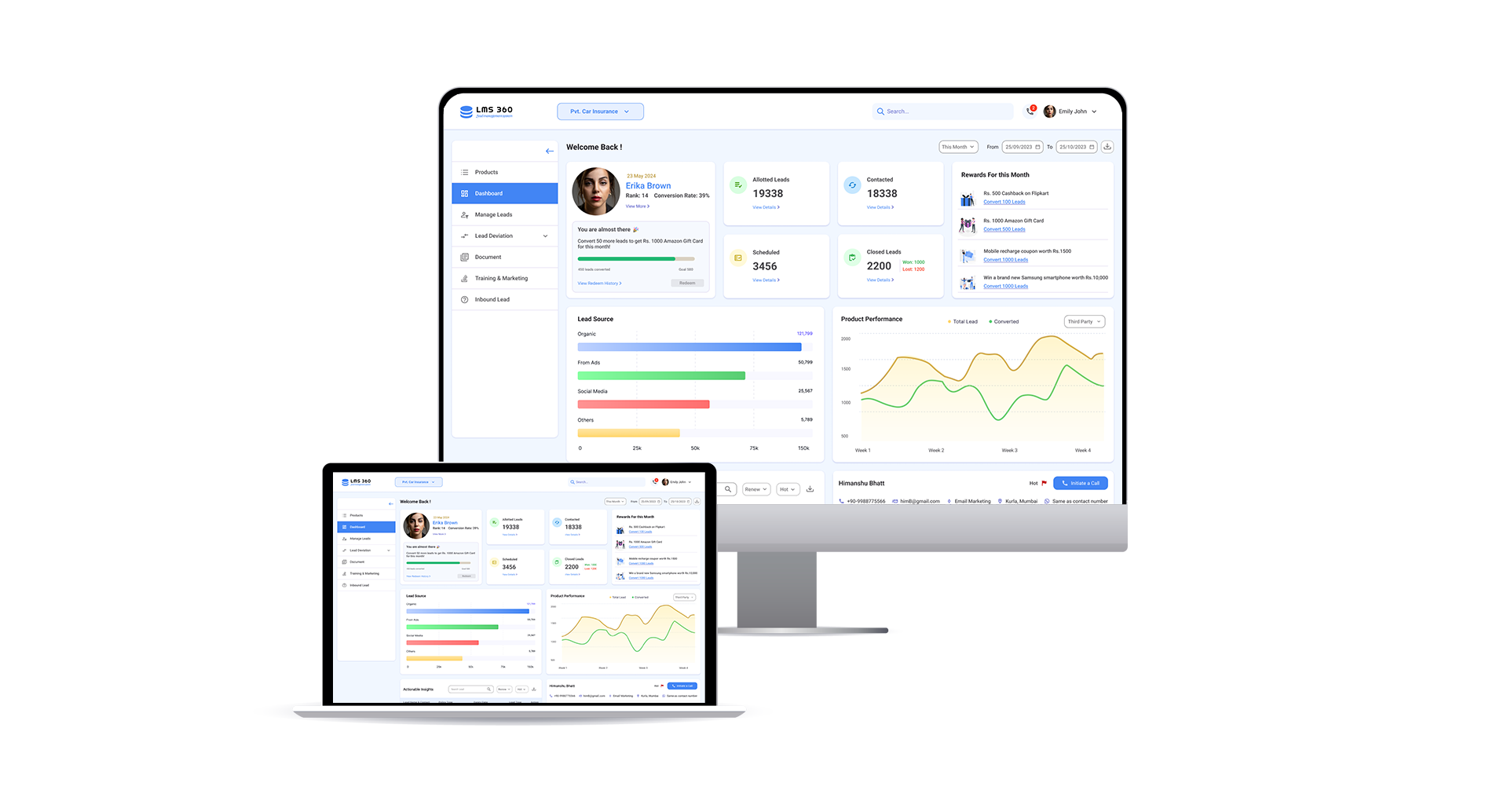
Project Overview
A CRM (Customer Relationship Management) system that helps insurance companies to track, manage, and convert leads more effectively.
Objective
The primary objective of this project was to design a CRM system that would:
- Streamline the lead tracking and management process to enable agents to handle leads efficiently without being overwhelmed.
- Offer managers and team leaders a comprehensive view of lead data, agent performance, and conversion metrics.
- Ensure that agents could easily prioritize and follow up on high-value leads to increase sales conversions.
- Enable detailed reporting and analytics to monitor lead status and agent performance.
Research & Analysis
Stakeholder Workshop
We conducted workshops involving the stakeholders and insurance agents to understand their pain points with existing CRM systems.
Key insights from the research included:
- Information Overload : Agents often struggled with large amounts of irrelevant data in existing CRM systems. They needed to focus on the most important information, like lead status, client interaction history, and follow-up dates.
- Lead Prioritization : Difficulty in identifying high-priority leads and managing follow-ups effectively.
- Data Overload : Agents found it overwhelming to deal with multiple fields and input requirements.
- Customizable Dashboards : A need for personalized dashboards to see relevant information at a glance.
Competitor Analysis
We analyzed existing CRM platforms in the market, such as Salesforce, Zoho, and Pipedrive, focusing on how well they served the insurance industry. While these CRMs were highly customizable, they often overwhelmed users with unnecessary features.
Personas / Users
Based on the research, we developed two key personas to guide our design process :
- The Admin : Requires an overview of the team’s performance, the ability to monitor lead status, asignment of leads, and tools to track agent productivity.
- The Tele Caller : Focuses on conversion of leads into customer, needing detailed analytics to make informed decisions and optimize sales strategies.
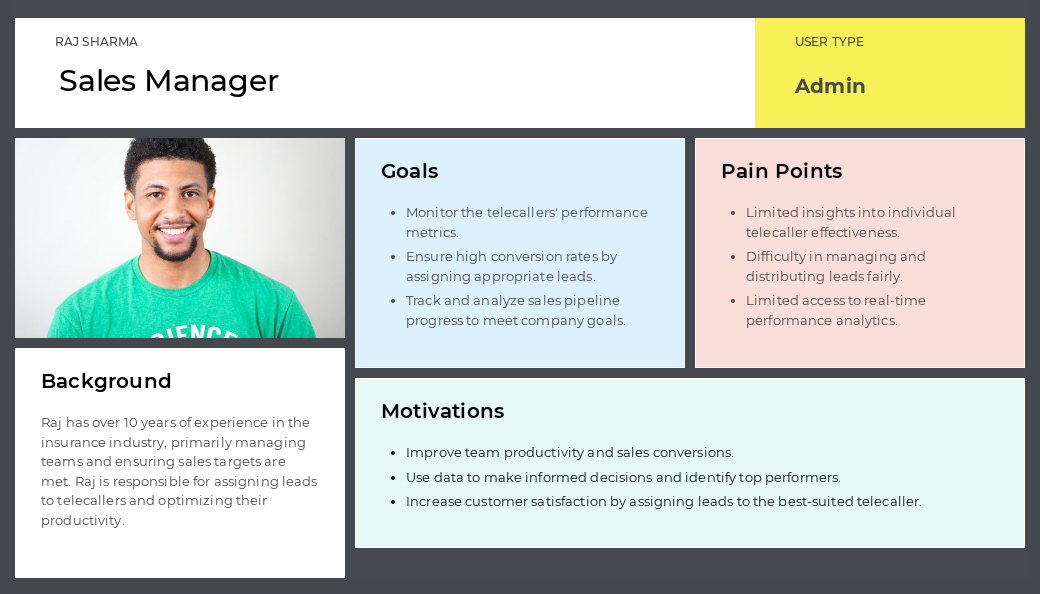
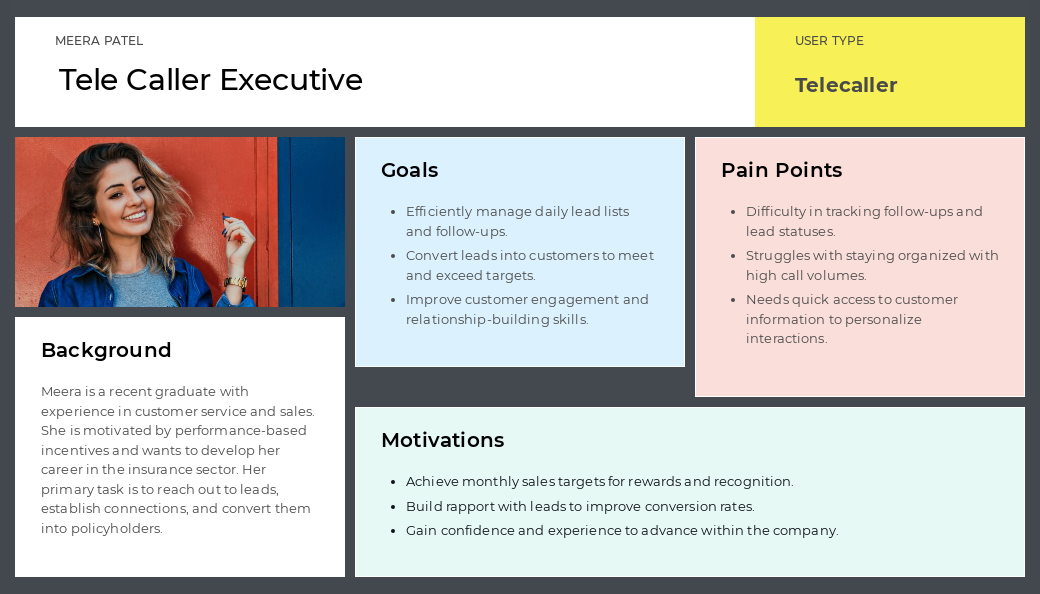
Mind Map
To address the needs of these personas, we created mind map to define goals and features to include after many brainstorming sessions:
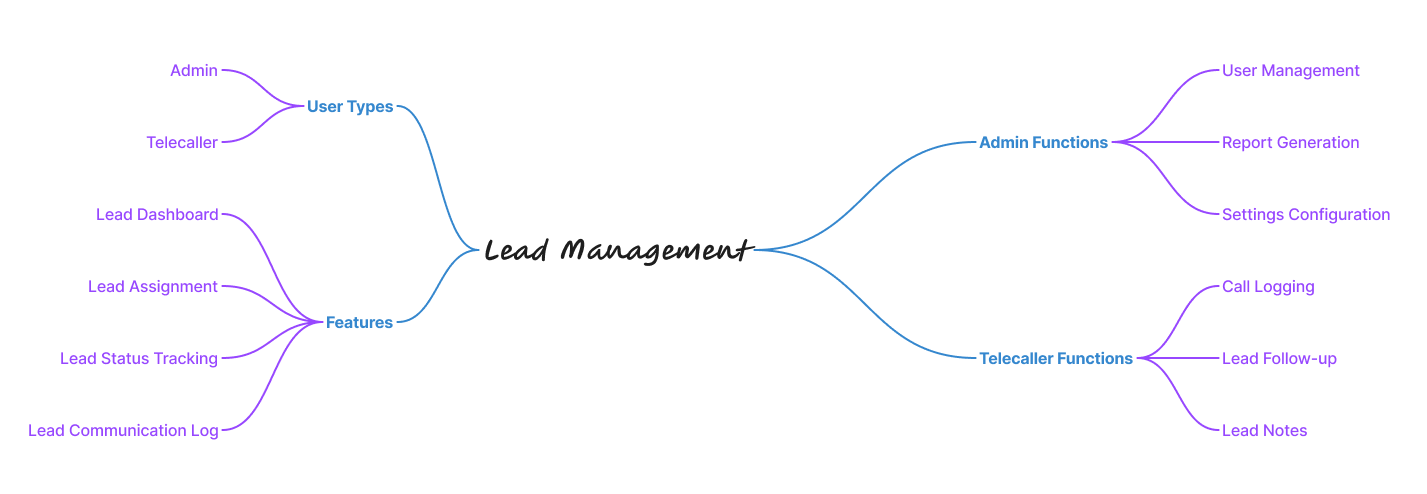
User Flow
After defining the goals and deciding on the features to include, We went on to establish the information architecture of the website by using a User Flow. We built an ideal workflow based on our two different types of users: Admin and Tele Caller.
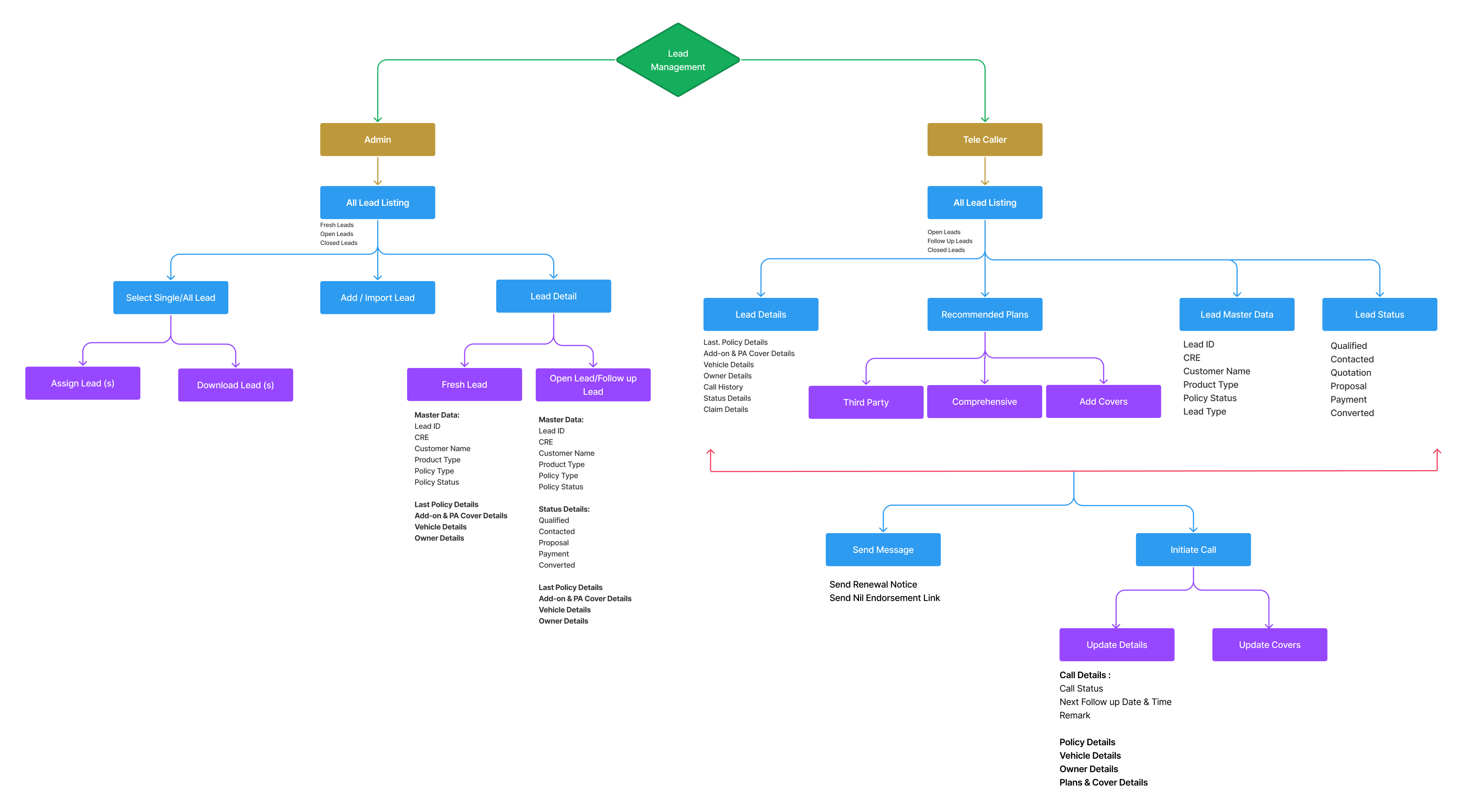
UI Design
Design System Overview
A dedicated design system was implemented to maintain visual and functional consistency across the CRM platform. This design system included a comprehensive set of design guidelines for typography, icons, color palette, components, and layout structures, ensuring that the platform delivered a cohesive experience, optimized usability, and an intuitive user interface.

High-Fidelity Designs & Key Features
Dashboard
- A user-friendly dashboard that shows real-time performance metrics, including lead conversion rates, agent performance, and sales trends.
- Visual reports with charts, tables, and graphs to give users an overview of lead performance and statistics.
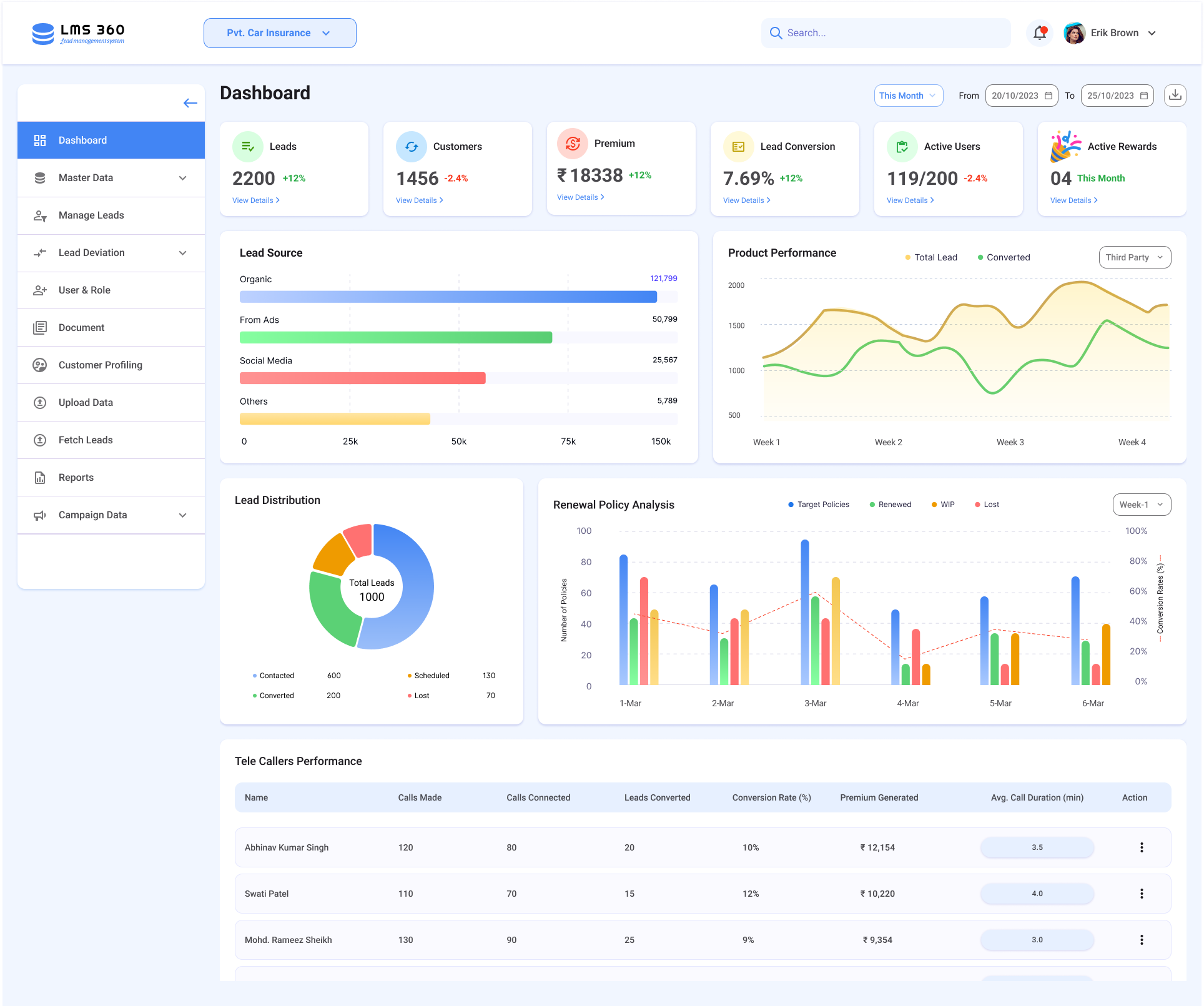
Lead Management
- A centralized view of all leads, with the ability to filter, sort, and search leads based on various parameters (priority, lead type, lead source, etc.).
- User (admin) can import leads as csv file to upload bulk leads as well as can add single lead manually and assign leads to the tele-callers.
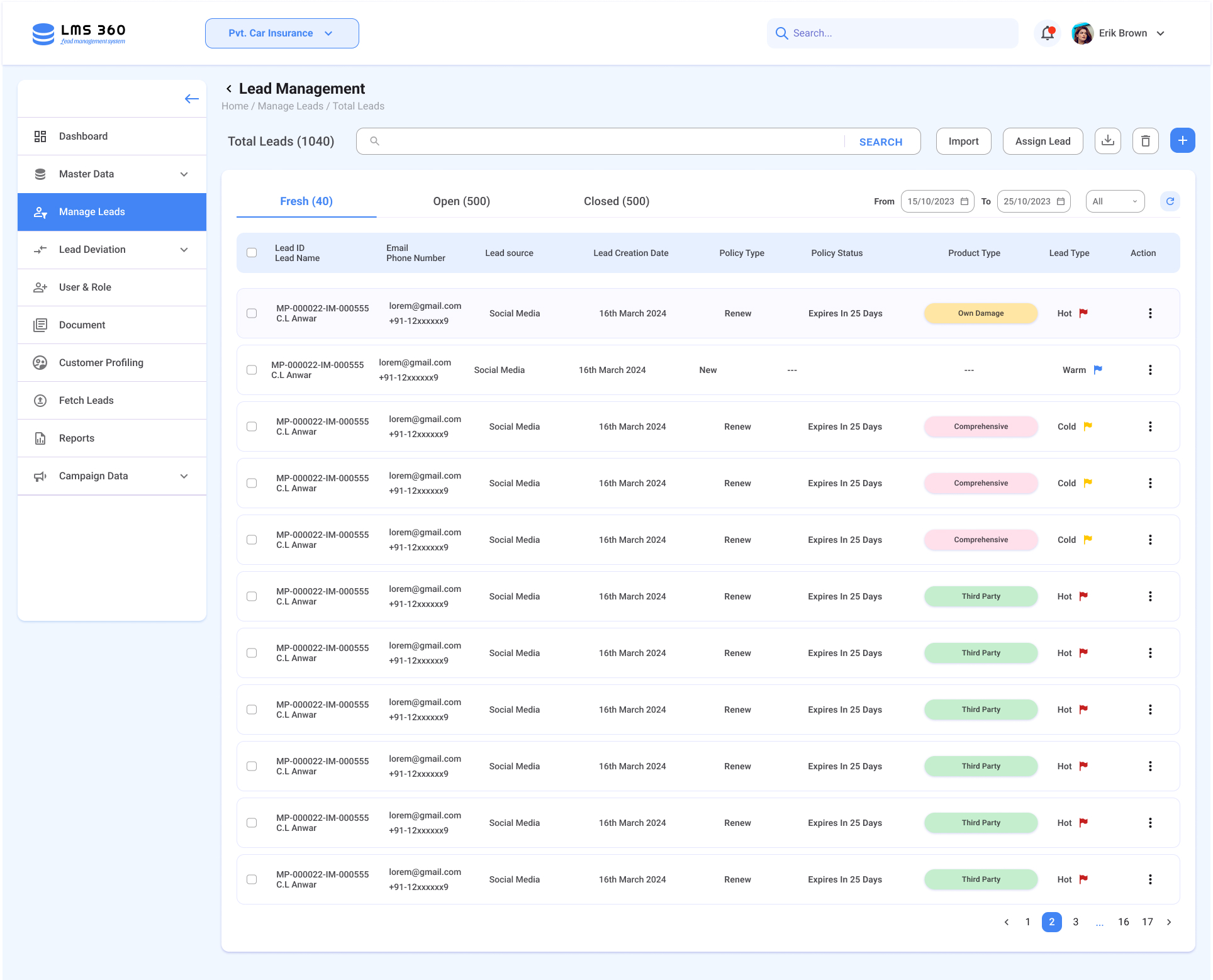
Lead Details and Status Tracking
- The step indicator helps agents understand lead status at a glance, showing stages like "New," "Contacted," "Qualified," "Proposal Sent," and "Closed" or "Lost." This linear, sequential design ensures the agent can see progression, gaps, and next steps for each lead.
- Comprehensive and user-friendly sections and tabs are designed for lead details which help users find data easyly.
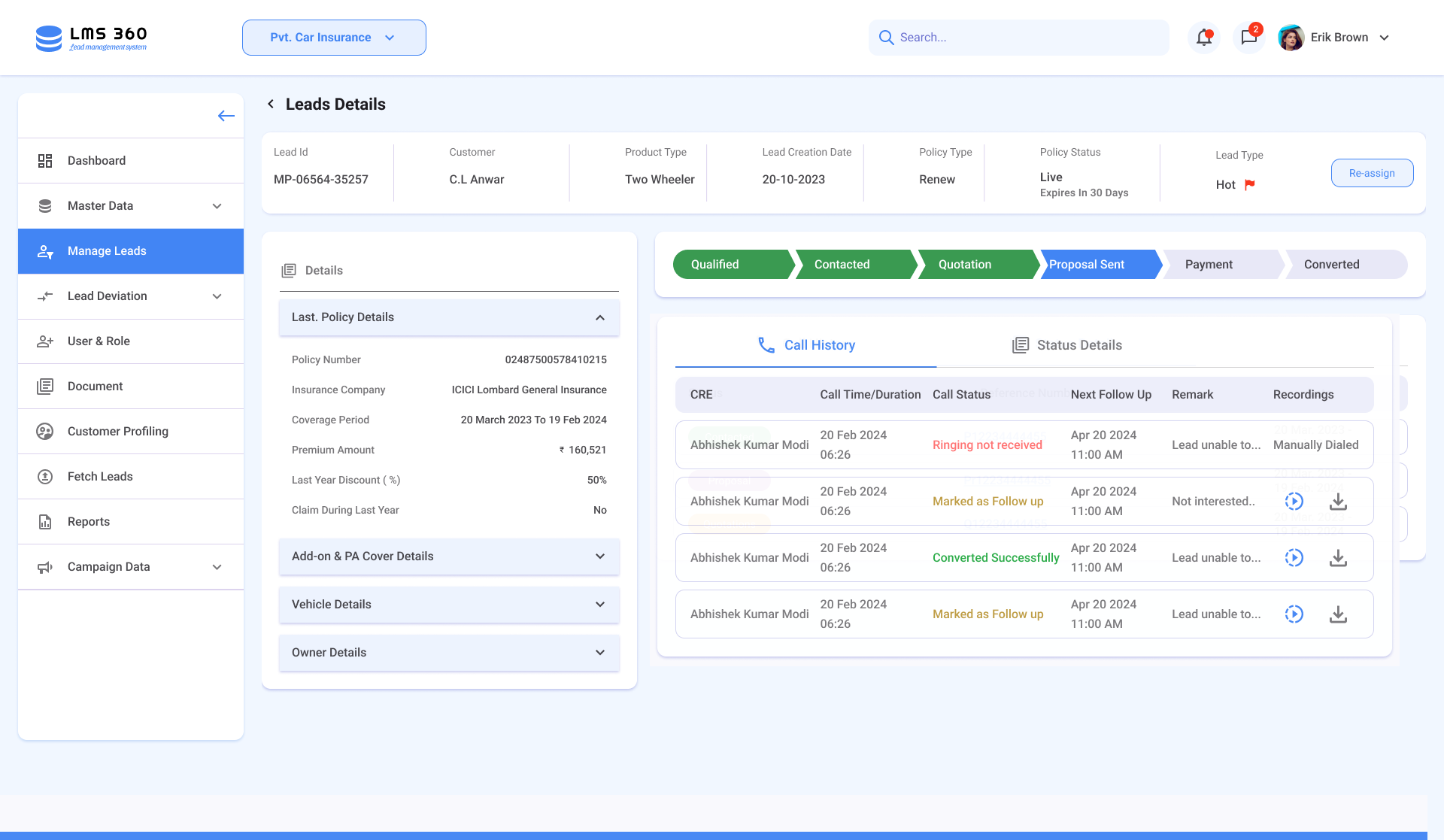
Call Initiation & Lead Information Logging
- This page integrates call initiation with real-time data entry, allowing agents to document lead information, inquiries, and preferences directly during the conversation.
- While on the call, users can record lead responses that reduces the need for post-call data entry.
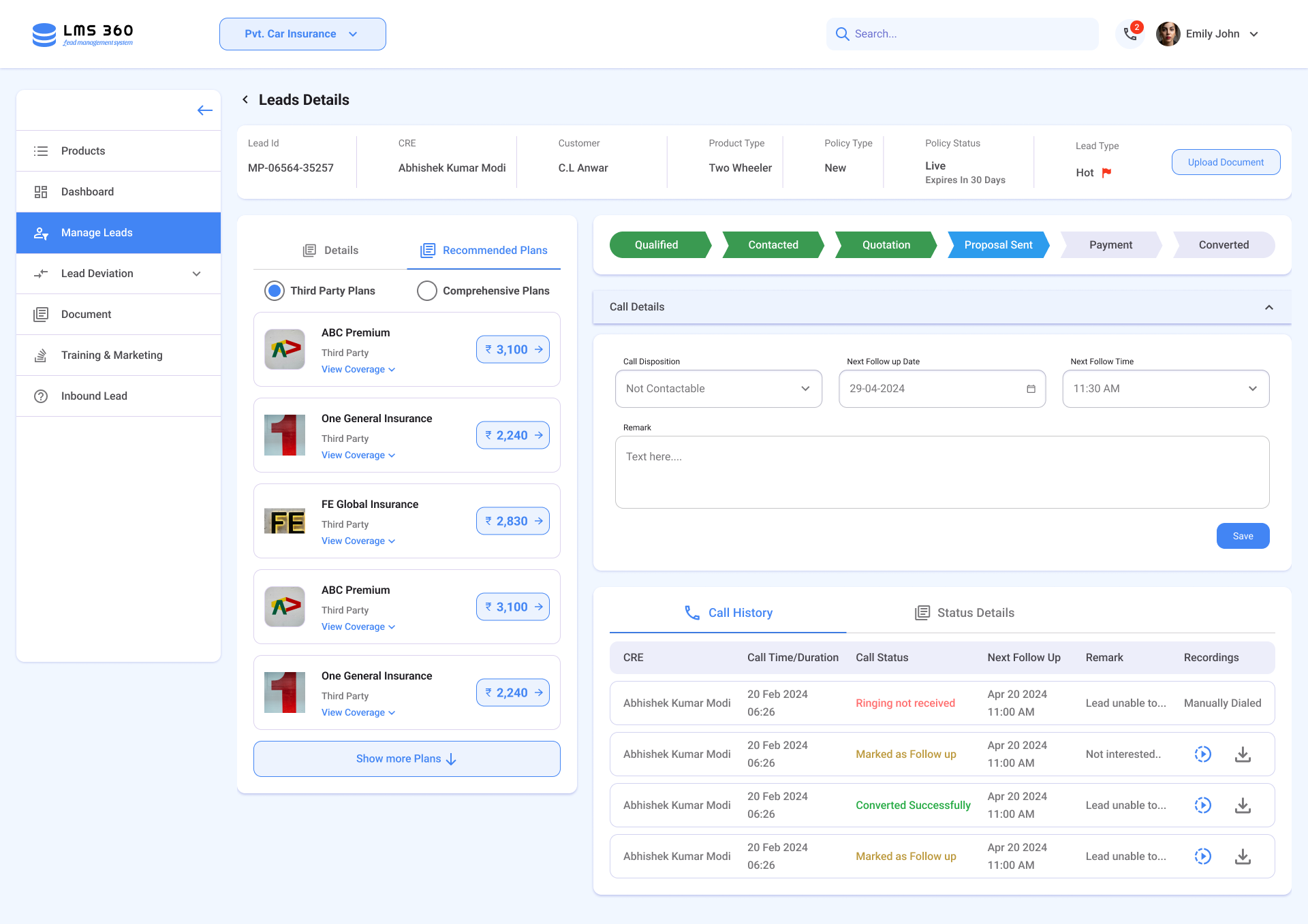
Usability Testing
Testing Approach
We conducted usability testing with insurance agents and stakeholders using an interactive prototype. The testing process included:
- Task Completion : Agents were asked to complete specific tasks such as adding a lead, assigning lead, follow-up, and viewing lead performance reports.
- Feedback Sessions : We held one-on-one feedback sessions to capture their thoughts on the interface, pain points, and suggestions for improvement.
Key Finding
Agents wanted more robust filtering options (e.g., filtering by lead source, date added, or last contact). We introduced advanced filtering options in the final design.
Challenges and Learnings
The Challenge:
- Balancing Simplicity with Functionality : Striking the right balance between providing enough features and keeping the interface simple was challenging. Some agents wanted more features, while others preferred minimalism.
Key Learnings
- User-Centric Design : Continuous feedback from end-users (agents and managers) was critical to refining the design. Real-world usage patterns often differ from initial assumptions.
- Iterative Design Process : Iteration based on feedback allowed us to identify issues early and address them, leading to a better final product.
Conclusion
The CRM lead management system delivered an efficient, user-friendly platform tailored to the specific needs of insurance agents. By focusing on simplifying lead tracking, improving follow-up processes, and providing actionable insights through analytics, the system improved agent productivity and lead conversion rates. The project highlighted the importance of user-centered design and the value of iterative feedback in delivering a product that meets real-world needs.
